

The Aleutians

The Lands of 50 mph Fog
© HLSWILLIWAW.COM
Built with XARA
B-24D
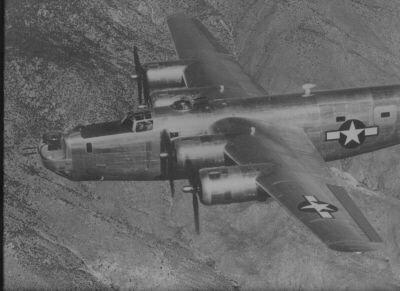
This photo of a B-24 flying the Aleutians was
provided by William Eubank.
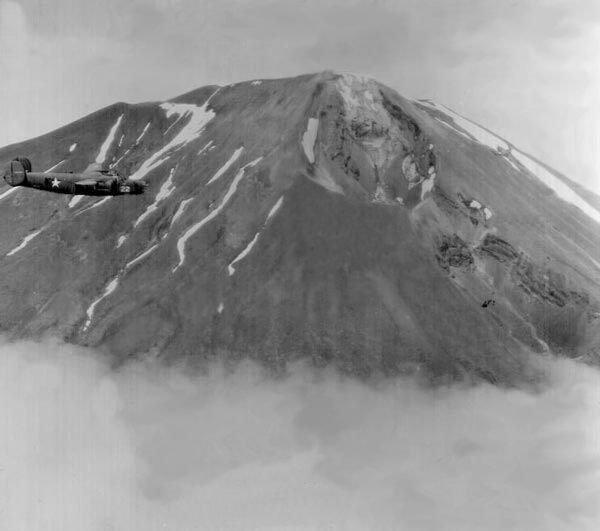
Jeff Marksbury's father flew this B-24D, SN 123973, attached to the
404th Bomb Squadron, Shemya, Alaska. This plane was transferred to
the 404th from Casper, Wyoming where the crew was formed. It flew 30
missions before it was replaced by a B-24J. This B-24D was then
scrapped for parts.
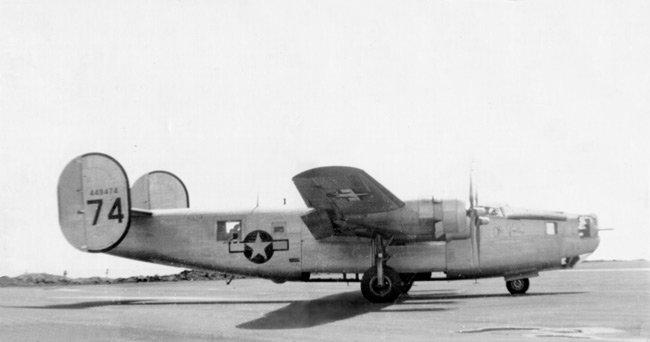
This 1946 photo of the 404th Bomb Squadron (H) B-24 "The Glutton" parked
on Shemya, AK was provided by William J. Blake
The USAAC approached Consolidated to construct a bomber with performance superior to the B-17. The new aircraft, initially
designated as the Model 32 by Consolidated, was built in near record time. It was built around the then-new long-span/low-drag
Davis wing. The Army was so impressed with how the project was shaping up, it ordered 36 production units well before the
prototype XB-24 had taken to the skies. The Liberators eventually were built not only by Consolidated, but also by Douglas,
Ford, and North American, with the first B-24 prototype flying on 29 December, 1939. The British coined the name of this aircraft
(as well as many others!) as the "Liberator." The Liberator saw its first combat by the RAF's Coastal Command over the Atlantic
in mid-1941.
The USAAF production got into full swing with the introduction of the B-24D. This version was sent to the Middle East and
Europe in 1942/43. This was followed by the B-24J, with 6678 being built.
The Liberator was also used by the U.S. Navy with the designation of PB4Y, and by the RAAF in the Far East. When production
ceased on 31 May 1945, 18,475 Liberators had been built, making it the most produced American aircraft of WWII.
The Consolidated B-24 Liberator performed roles as heavy bomber, bomber escort, long-range maritime patrol, reconnaissance,
transport, cargo, tanker, and even as a training aircraft. Although the Liberator served on every front, it was never as popular
with its crews as the B-17 because it was quicker to catch fire in battle and suffered numerous hydraulic problems. The B-24
thus was not compared favorably to the B-17 by its crews.
The long wing-span gave the B-24 excellent range and great performance at high altitudes. The Norden bomb sight was one of
the more famous components of this aircraft, which gave it the ability to perform precision bombing attacks from these high
altitudes.
First Flight Date: 29 December 1939.
Type: Heavy bomber with crew of 10.
Powerplant: Four 1,200 hp Pratt and Whitney R-1830-43/65 Twin Wasp radial piston engines.
Max Speed: 290 m.p.h.
Range: 2,100 miles.
Service Ceiling: 32,500 feet.
Weapons: One 0.50 cal. nose gun (some with additional 0.50 cal. fixed nose guns), two more each in dorsal turret, tail turret,
retractable ball turret and waist positions; plus max internal bomb load of 8,800 lbs.
Weights: Empty 36,500 lbs; Max (Take-off) 71,200 lbs.
Dimensions:
Wingspan: 110 ft 0 in.
Wing Area: Approx. 1,048 sq. ft.
Length: 67 ft. 2 in.
Height: 18 ft. 0 in.
Additional References: 1) Jane's Historic Military Aircraft 2) Aircraft of the World
Current Update: 07 Dec 2021
Last Updated: 04 Jan 2013
This photo of a B-24 flying the Aleutians was
provided by William Eubank.


The Aleutians

The Lands of 50 mph Fog
B-24D
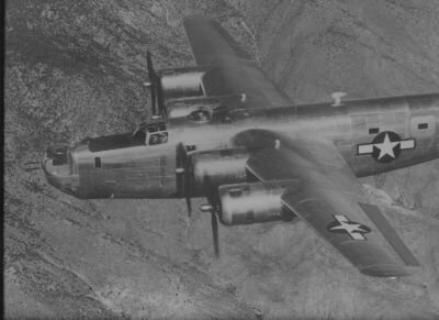
This photo of a B-24 flying the Aleutians was
provided by William Eubank.
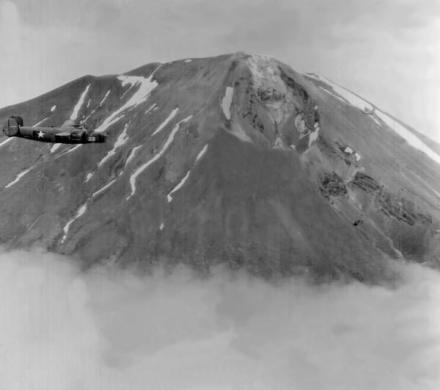
Jeff Marksbury's father flew this B-24D, SN 123973, attached to the
404th Bomb Squadron, Shemya, Alaska. This plane was transferred to
the 404th from Casper, Wyoming where the crew was formed. It flew 30
missions before it was replaced by a B-24J. This B-24D was then
scrapped for parts.
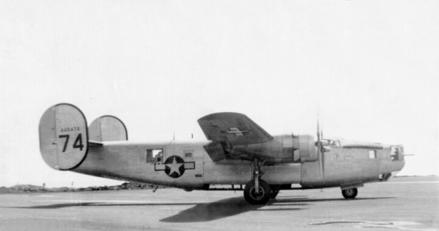
This 1946 photo of the 404th Bomb Squadron (H) B-24 "The Glutton" parked
on Shemya, AK was provided by William J. Blake
The USAAC approached Consolidated to construct a bomber with
performance superior to the B-17. The new aircraft, initially
designated as the Model 32 by Consolidated, was built in near
record time. It was built around the then-new long-span/low-drag
Davis wing. The Army was so impressed with how the project was
shaping up, it ordered 36 production units well before the
prototype XB-24 had taken to the skies. The Liberators eventually
were built not only by Consolidated, but also by Douglas, Ford,
and North American, with the first B-24 prototype flying on 29
December, 1939. The British coined the name of this aircraft (as
well as many others!) as the "Liberator." The Liberator saw its
first combat by the RAF's Coastal Command over the Atlantic in
mid-1941.
The USAAF production got into full swing with the introduction of
the B-24D. This version was sent to the Middle East and Europe in
1942/43. This was followed by the B-24J, with 6678 being built.
The Liberator was also used by the U.S. Navy with the
designation of PB4Y, and by the RAAF in the Far East. When
production ceased on 31 May 1945, 18,475 Liberators had been
built, making it the most produced American aircraft of WWII.
The Consolidated B-24 Liberator performed roles as heavy
bomber, bomber escort, long-range maritime patrol,
reconnaissance, transport, cargo, tanker, and even as a training
aircraft. Although the Liberator served on every front, it was never
as popular with its crews as the B-17 because it was quicker to
catch fire in battle and suffered numerous hydraulic problems.
The B-24 thus was not compared favorably to the B-17 by its
crews.
The long wing-span gave the B-24 excellent range and great
performance at high altitudes. The Norden bomb sight was one of
the more famous components of this aircraft, which gave it the
ability to perform precision bombing attacks from these high
altitudes.
First Flight Date: 29 December 1939.
Type: Heavy bomber with crew of 10.
Powerplant: Four 1,200 hp Pratt and Whitney R-1830-43/65 Twin
Wasp radial piston engines.
Max Speed: 290 m.p.h.
Range: 2,100 miles.
Service Ceiling: 32,500 feet.
Weapons: One 0.50 cal. nose gun (some with additional 0.50 cal.
fixed nose guns), two more each in dorsal turret, tail turret,
retractable ball turret and waist positions; plus max internal bomb
load of 8,800 lbs.
Weights: Empty 36,500 lbs; Max (Take-off) 71,200 lbs.
Dimensions:
Wingspan: 110 ft 0 in.
Wing Area: Approx. 1,048 sq. ft.
Length: 67 ft. 2 in.
Height: 18 ft. 0 in.
Additional References: 1) Jane's Historic Military Aircraft 2)
Aircraft of the World
Current Update: 07 Dec 2021
Last Updated: 04 Jan 2013
© HLSWILLIWAW.COM
Built with XARA

















